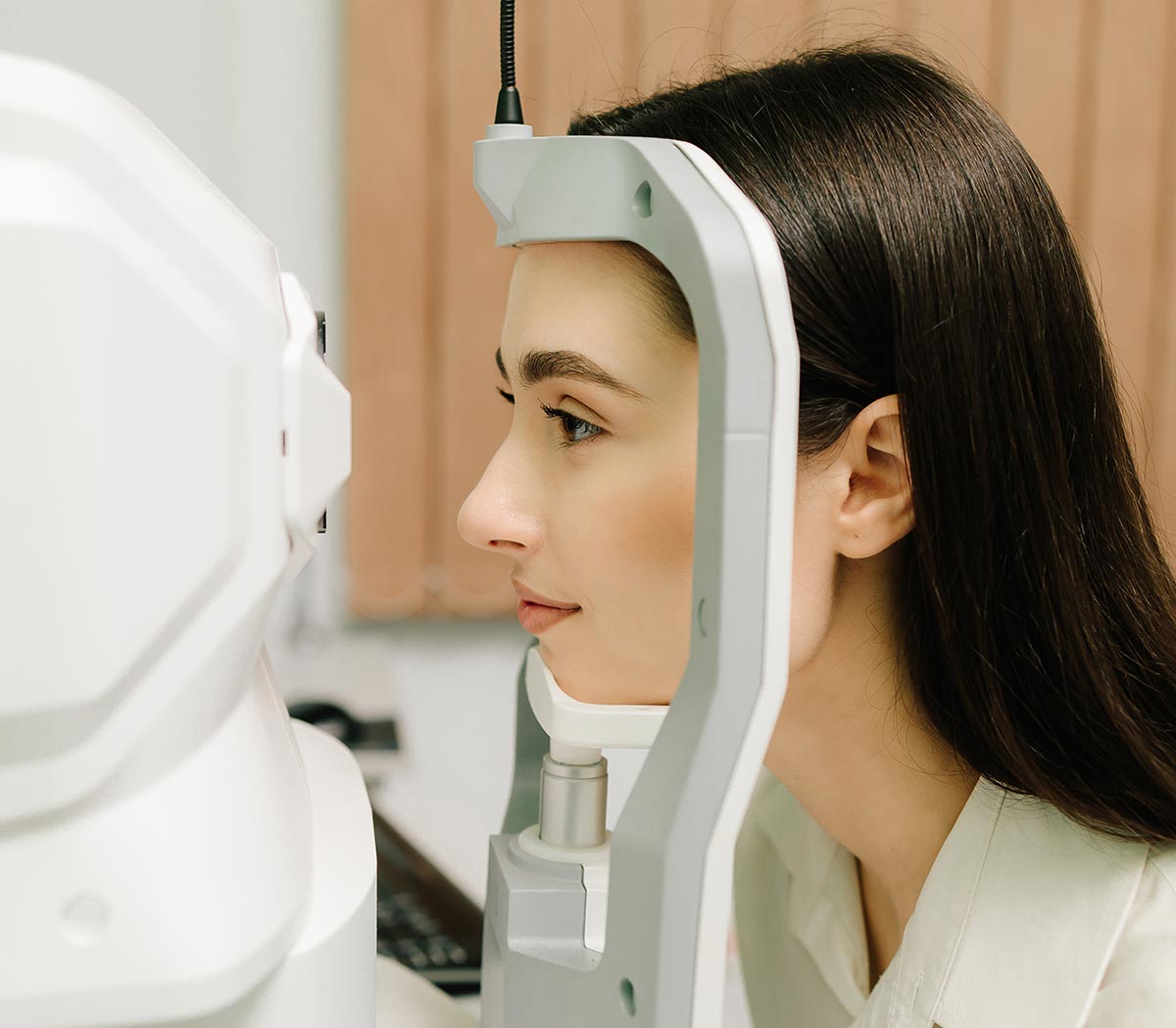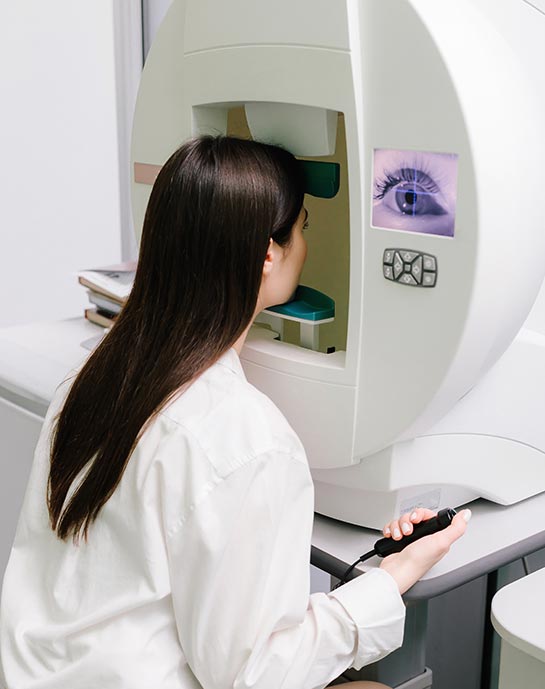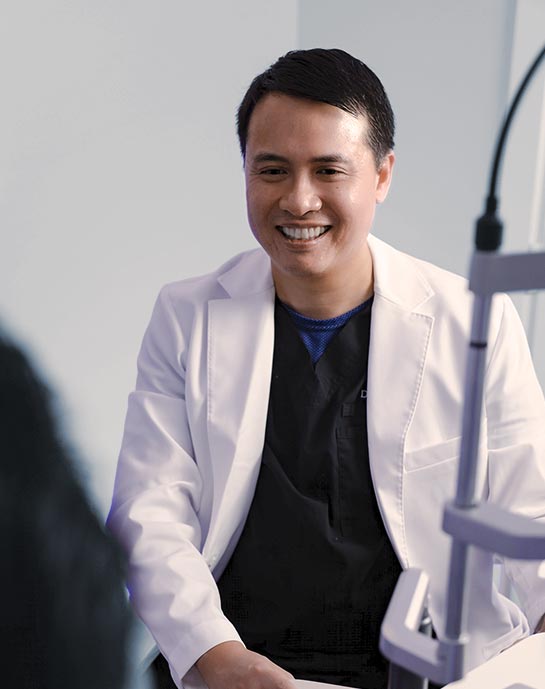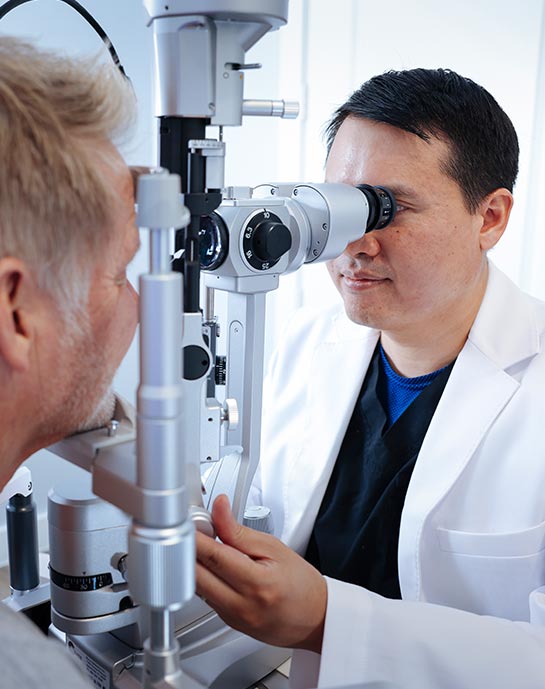DMEK and DSEK

DMEK and DSEK:
Advanced Corneal Transplants for Fuchs’ Dystrophy and Endothelial Disease
At Azure Eye Center, we specialize in advanced corneal transplantation techniques that restore vision, reduce recovery time, and lower the risk of complications. For patients in Fort Worth and Colleyville, TX suffering from Fuchs’ Dystrophy or other forms of endothelial dysfunction, we offer Descemet’s Membrane Endothelial Keratoplasty (DMEK) and Descemet’s Stripping Endothelial Keratoplasty (DSEK or DSAEK).
These minimally invasive surgeries are the modern standard of care for treating damaged or failing endothelial cells—the innermost layer of the cornea responsible for keeping it clear and dehydrated.


What Are DMEK and DSEK?
Both DMEK and DSEK are forms of endothelial keratoplasty (EK)—a type of partial-thickness corneal transplant that replaces only the diseased inner layer of the cornea, leaving the rest of the cornea intact.
- DSEK (Descemet’s Stripping Endothelial Keratoplasty) involves transplanting the endothelium and a thin layer of donor stroma.
- DMEK (Descemet’s Membrane Endothelial Keratoplasty) transplants only the ultra-thin Descemet’s membrane and endothelium.
These procedures are far less invasive than traditional full-thickness transplants (PKP) and result in faster healing, stronger corneal structure, and lower rejection rates.
Conditions Treated with DMEK and DSEK
Patients in Fort Worth and Colleyville may benefit from DMEK or DSEK for:
- Fuchs’ Endothelial Dystrophy
- Pseudophakic Bullous Keratopathy
- Corneal decompensation after surgery
- Congenital endothelial dystrophies
- Other corneal edema conditions affecting the endothelium
If you’ve been told you have swelling or clouding of the cornea, especially after cataract surgery, a consultation with Dr. David Truong can determine whether endothelial keratoplasty is right for you.
Meet Your Surgeon:
Dr. David Truong, Cornea-Trained Ophthalmologist
At Azure Eye Center, DMEK and DSEK are performed by Dr. David Truong, a board-certified ophthalmologist and fellowship-trained cornea and refractive surgeon. His specialized training in corneal transplantation allows him to choose the most effective surgical approach for your condition—maximizing visual results while minimizing risk.
With extensive experience in advanced endothelial procedures, Dr. Truong provides care that’s not only technically precise but deeply personalized.

DSEK vs. DMEK: What’s the Difference?
While both surgeries offer excellent outcomes, there are key differences:
- Donor Tissue
- Graft Thickness
- Rejection Risk
- Visual Clarity
- Surgical Complexity
- Endothelium + some stroma
- Thicker
- Slightly higher
- Excellent
- Moderate
- Only Descemet’s membrane + endothelium
- Ultra-thin (10–15 microns)
- Lowest among all keratoplasty techniques
- Superior – closer to natural cornea
- High – requires expert technique
Because DMEK is more technically challenging, it’s important to choose a surgeon with subspecialty corneal training, like Dr. Truong, who has extensive experience in both techniques.
The Surgical Process
Both procedures are performed on an outpatient basis in under an hour, using local anesthesia and mild sedation.
Step-by-Step Overview:
- The damaged endothelial layer is gently removed from the cornea.
- Donor tissue is prepared and inserted through a small incision.
- An air bubble is used to float the graft into position.
- Patients lie face-up for a few hours to help the graft adhere.
You’ll be able to go home the same day with post-operative instructions and follow-up care scheduled at our Fort Worth or Colleyville offices.
Recovery & Results
Most patients experience rapid improvement in vision, often within 1–3 weeks after DMEK, and 4–6 weeks for DSEK.
Post-op instructions include:
- Eye drops to prevent infection and rejection
- No strenuous activity or rubbing the eye
- Regular follow-ups to monitor healing
Rejection rates are extremely low—less than 1% for DMEK, and around 5–10% for DSEK. If signs of rejection are caught early, they can typically be reversed with medication.
Benefits of DMEK and DSEK Over Traditional Transplants
- Faster vision recovery
- No stitches or minimal sutures
- Less astigmatism
- Lower risk of rejection
- Stronger structural integrity
- Outpatient, minimally invasive procedure
Why Patients in Fort Worth and Colleyville Trust Azure Eye Center
- Corneal expertise: Dr. Truong’s fellowship training ensures advanced, up-to-date care.
- Two convenient locations: Making follow-ups and recovery seamless.
- Personalized surgical planning: Every case is reviewed in detail using high-resolution corneal imaging.
- Compassionate care: From consultation to post-op, our team is with you every step of the way.

Is DMEK or DSEK Right for You?

If you’ve been diagnosed with Fuchs’ Dystrophy, corneal swelling, or vision changes after surgery, you may be a candidate for a safer, faster-healing transplant alternative.
Schedule a consultation at Azure Eye Center in Fort Worth or Colleyville, TX to discuss DMEK, DSEK, and the best path to clearer vision with our cornea specialist, Dr. David Truong.
Request A
Consultation
To request a consultation with Azure Eye Center, please click link below.

